
Opinion
17:29, 03-Mar-2019
Is China winning the Declared War on Pollution?
Wu Changhua
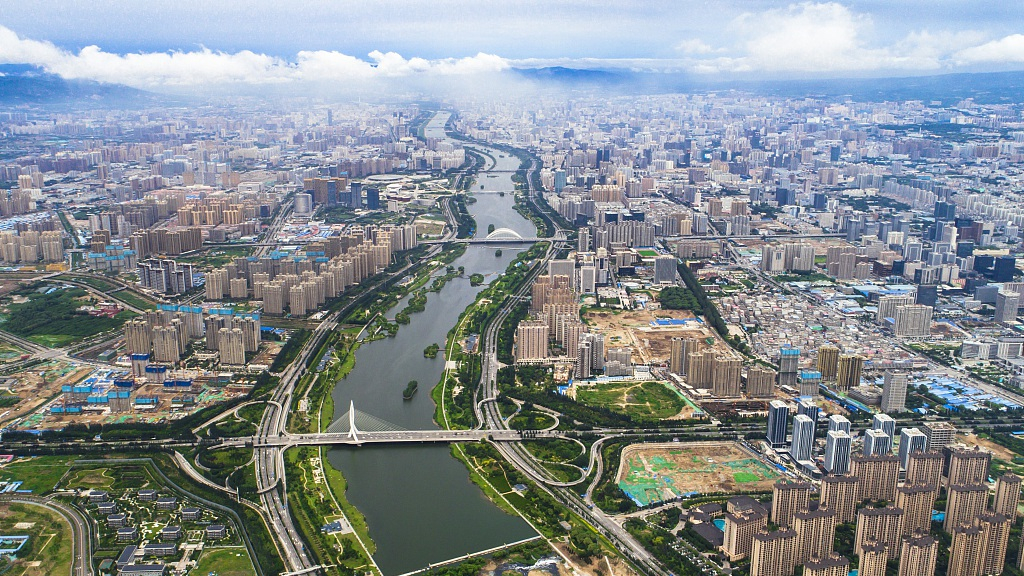
Editor's note: Wu Changhua is CEO of Beijing Future Innovation Center, and executive director of the Professional Association for China's Environment. The article reflects the author's views, and not necessarily those of CGTN.
Smog welcomes the arriving delegates from around the country to the annual “Two Sessions” in Beijing. It becomes both a reminder and a signal of how challenging it is to fundamentally address air pollution. A reminder also means a sense of urgency.
This signal reminds decision makers that restructuring the industrial and energy sectors is among the top priorities for the coming years in order to win the “Declared War on Pollution” and the “Blue Sky Protection Campaign.”
The “Two Sessions,” which are the annual meetings of the National People's Congress (NPC) and of the Chinese People's Political Consultative Conference (CPPCC), are now underway in Beijing, where thousands of delegates meet up to listen to and review Chinese Premier's Working Report of the previous year and also debate on and approve the work plan of the new year.
It is also very important to note that environmental protection and ecological security have been listed among the top agenda of the Two Sessions in recent years.
The War on Pollution was announced in 2013 when air, water and soil pollution were declared to be priority tasks for both the government and the country. A nationwide campaign was kicked off to first target air pollution under such flagships as the “Ten-Year Action Plan.”
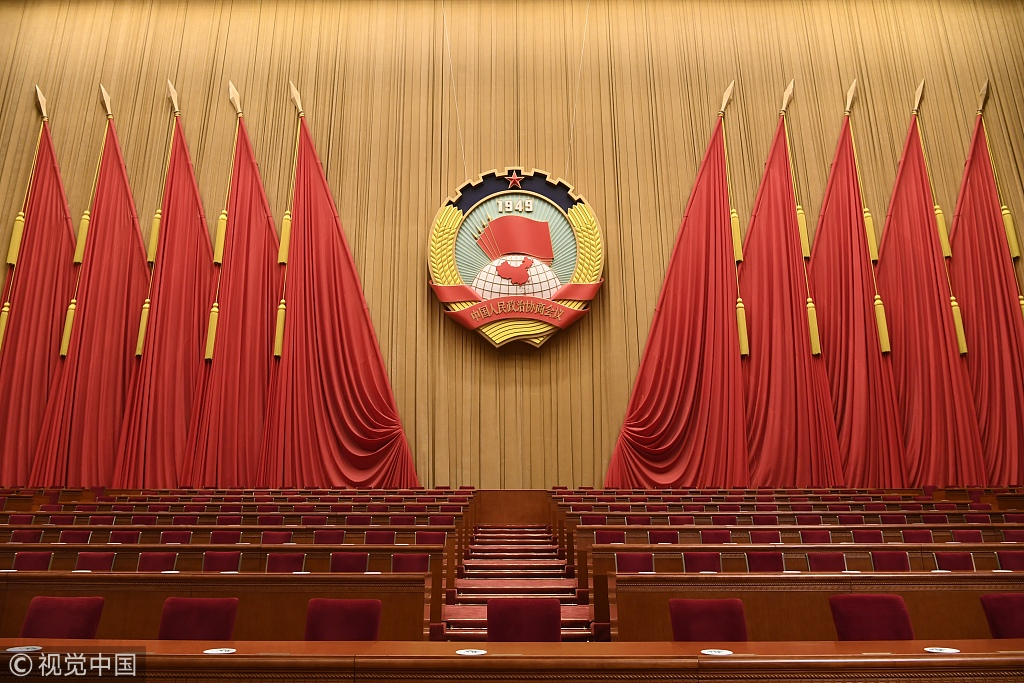
The Great Hall of the People, March 3, 2019. /VCG Photo
The Great Hall of the People, March 3, 2019. /VCG Photo
Since then, the country has experienced amendment of environmental laws and regulations, as well as of air pollution prevention and control laws and regulations. When the amended Law of Environmental Protection became effective on January 1, 2015, it was praised as the first piece of environmental legislation with “teeth.” Why?
The amended legislation today imposes criminal liabilities and prison terms when serious violation occurs. Both administrative and financial penalties are lifted up to the level that cannot be “ignored.”
As part of the effort, Premier Li Keqiang, when addressing the NPC in 2017, announced the “Blue Sky Protection Campaign” to accelerate the actions to deliver outcomes, with a particular focus on key regions, such as the Beijing-Tianjin-Hebei region.
How has the task been delivered? The national government and local governments have been making efforts to monitor the ambient concentration of air pollution and report the API (air pollution index) every day.
Such reporting has also been turned into a forecasting by integrating weather forecasts and meteorological information to remind people of what is coming up. In the meantime, the government issues warnings to the public for protective measures and even bans on certain activities when pollution is heavy.
Statistically, cities like Beijing demonstrate a general trend of better air quality in terms of number of days when smog is bad or not.
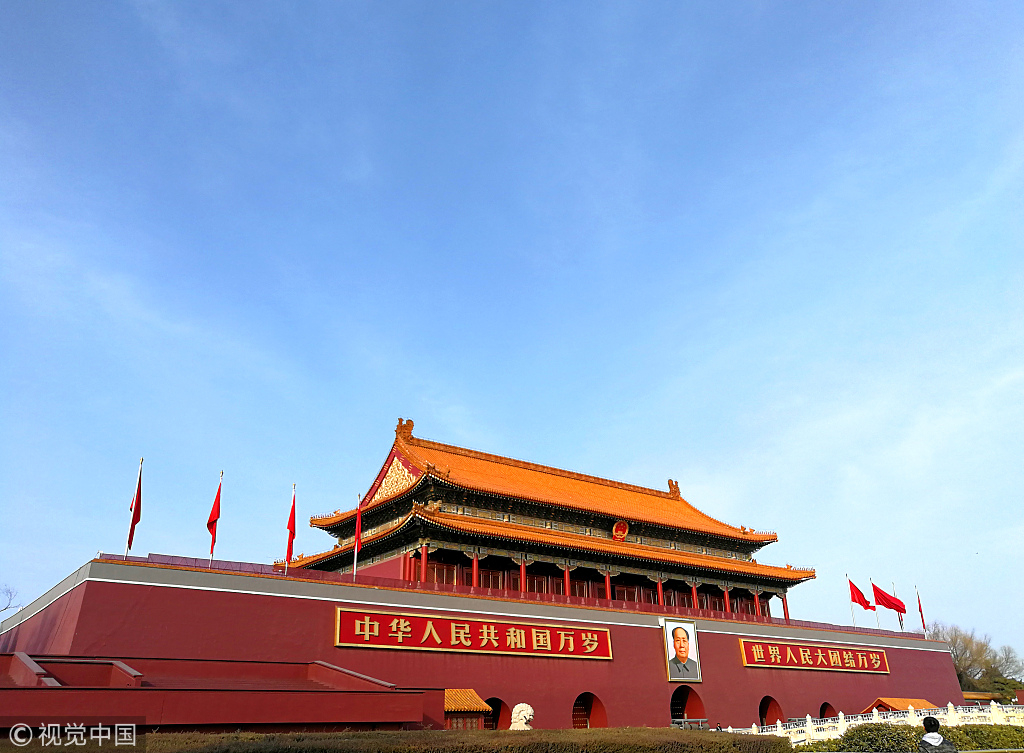
Tian'anmen, the Gate of Heavenly Peace, in central Beijing, February 24, 2019. /VCG Photo
Tian'anmen, the Gate of Heavenly Peace, in central Beijing, February 24, 2019. /VCG Photo
The national Campaign has also inspired social innovation in the age of social media and digitalization. BeijingAirNow, a local NGO, makes a great illustration with a daily photo record of the ups and downs of the PM2.5 concentration and releases the information via social media.
Six years have passed. Hundreds of social media hits and such an endeavor is now turned into Big Data empowered by photo AI that could be scaled nation-wide and globally when every individual can participate and learn about air quality in their community or where they travel.
And to make the case, the photo record of the air quality in Beijing echoes the government's monitoring record. The conclusion is China is on track to win the Declared War on Pollution and delivers the commitment of the Blue Sky Protection Campaign.
And yet, challenges remain. As illustrated by both government monitoring and BeijngAirNow, there is a long journey ahead.
Fundamentally, the country has to drive through its ambition and commitment to restructure its energy sector so that clean energy dominates its energy structure at a pace and scale aligned with the set targets and goals.
Coal today dominates China's primary energy landscape. But on the other side, the world has witnessed a continued growth of renewable energy, from both installations and the renewable energy marketplace.
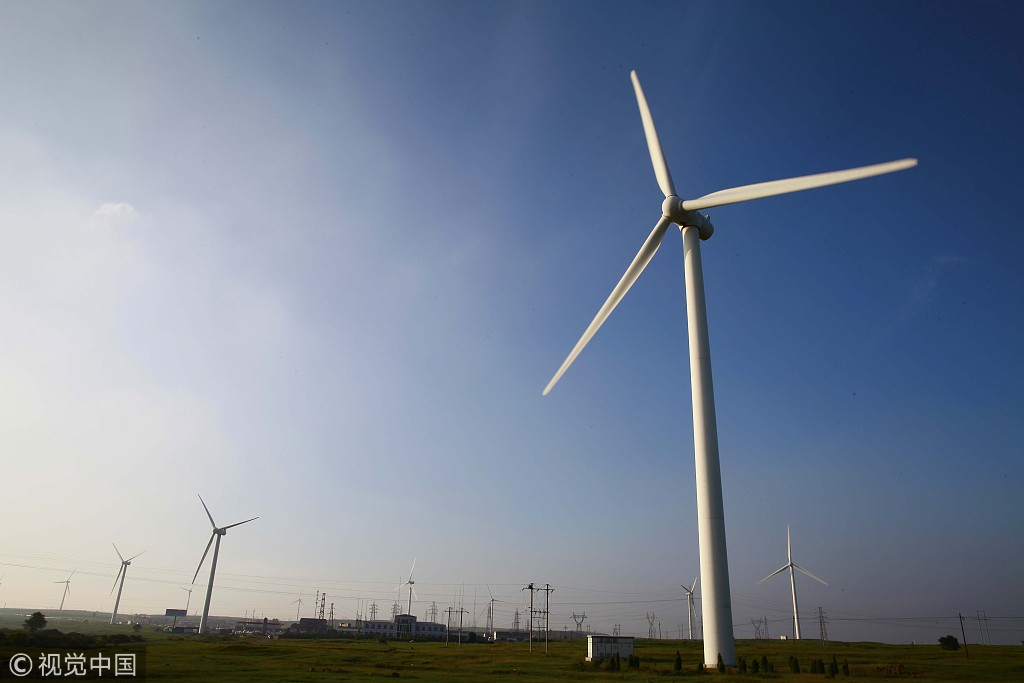
Wind-driven generators in Zhangjiakou, China's Hebei Province, July 13, 2018. /VCG Photo
Wind-driven generators in Zhangjiakou, China's Hebei Province, July 13, 2018. /VCG Photo
This year's Two Sessions shall focus on how to accelerate the progress to align the ambition to address air pollution and deployment of clean energy.
Efficiency and productivity have proven to be a new asset opportunity for companies to capture today. A clean energy revolution cannot possibly be won without fully capturing energy efficiency.
Enabled by AI and digitalization, companies, from both energy and other sectors, can capture a new asset of energy by deploying the energy Internet of Things (IOT). China's Trina Solar, a world-leading solar PV panel manufacturing, is becoming a leader in energy IOT.
This is literally transforming the conventional business model from selling panels to being an energy service provider.
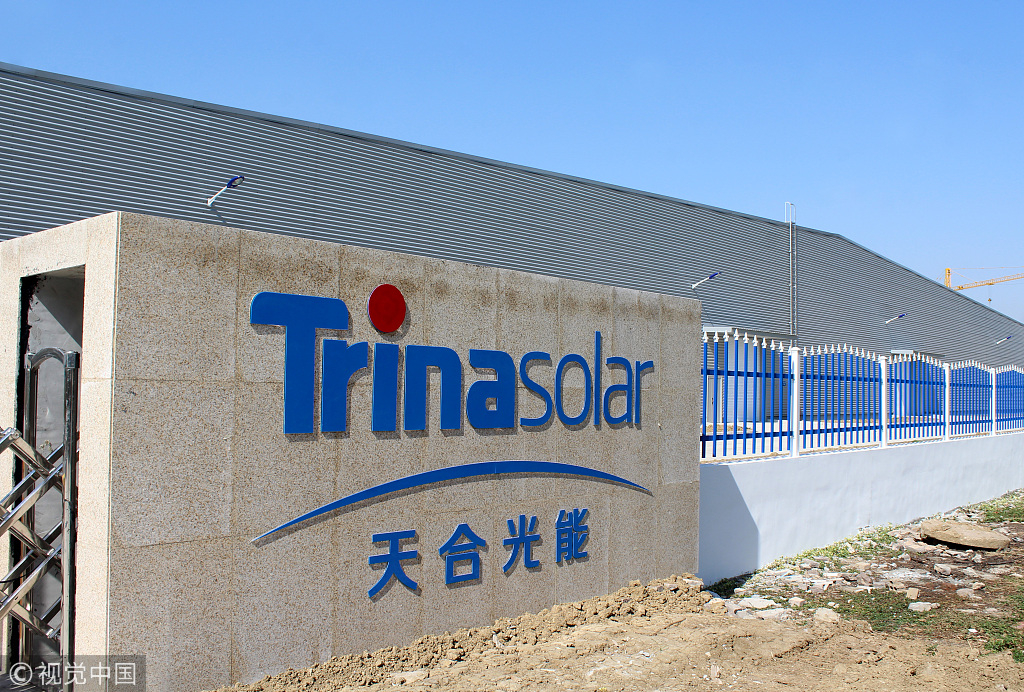
Trina Solar Limited, a world-leading solar PV panel manufacturer, is located in China's Jiangsu Province, October 27, 2018. /VCG Photo
Trina Solar Limited, a world-leading solar PV panel manufacturer, is located in China's Jiangsu Province, October 27, 2018. /VCG Photo
Energy users embrace a similar opportunity, and even bigger. The 4th Industrial Revolution, as represented by technology breakthroughs in physical, biological and digital disciplines, are literally redefining how we produce products, provide services, build and operate infrastructure, as well as how we consume.
This is redefining how to consume energy too. Hai'er, a leading home appliances manufacturer headquartered in Qingdao, is becoming a smart home company.
From refrigerators to air conditioners, from washing machines to cookers, households are given the control of energy consumption via mobile devices.
At the local level, the island province of Hainan has become the first to end the sale of petrol and diesel vehicles and move toward 100-percent electrification of vehicles, started on March 1, 2019.
To protect air quality and become a Green Island, Hainan has also committed to totally phasing out petrol and diesel vehicles by 2030.
To put this in perspective, China, among some other countries, committed to 100 percent EV sales in 2030. Hainan leads China's effort 11 years ahead of others, at least.
Looking out of the window, I know that I shall not stay outdoors much today. The Beijing municipal government agency has texted a message to my mobile phone saying it is an Orange Alert day of heavy air pollution.
Not only today but this coming four days, vehicles that fall below GB emissions standards, and those that transport construction waste, gravel and muck, shall not drive on the road. This is a good demonstration of how the efforts are coming together in China to systemically address air pollution.
But as I mentioned earlier, the Two Sessions this year shall look into how to accelerate actions and solutions to address some fundamental and root causes in order to deliver the Blue Sky commitment to its people.
(If you want to contribute and have specific expertise, please contact us opinions@cgtn.com.)

SITEMAP
Copyright © 2018 CGTN. Beijing ICP prepared NO.16065310-3
Copyright © 2018 CGTN. Beijing ICP prepared NO.16065310-3